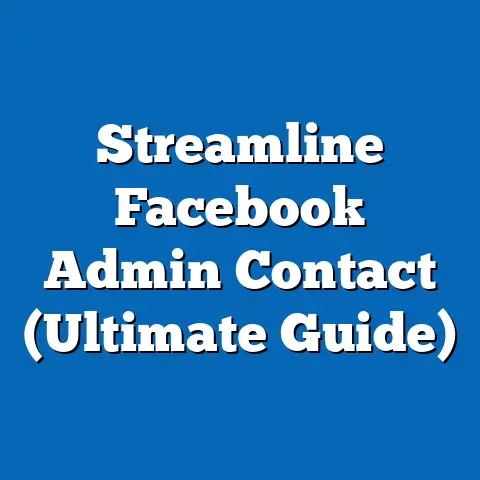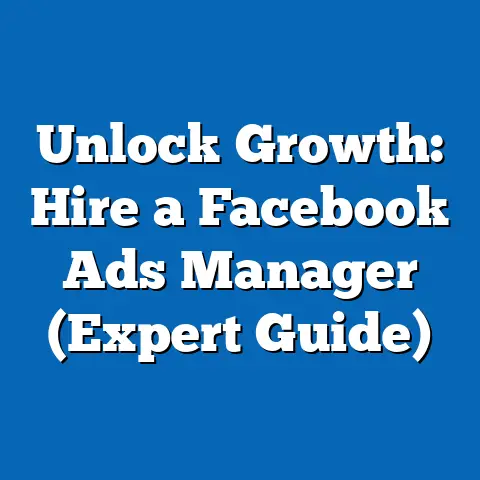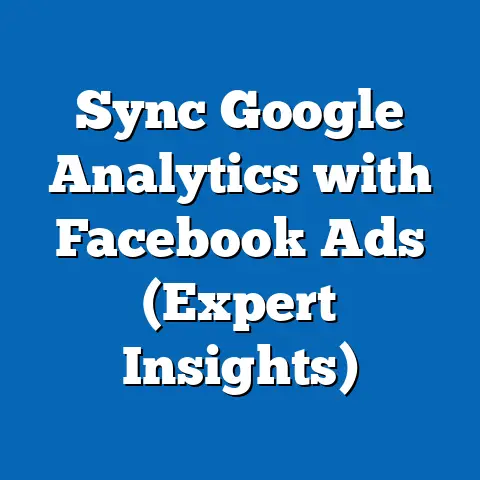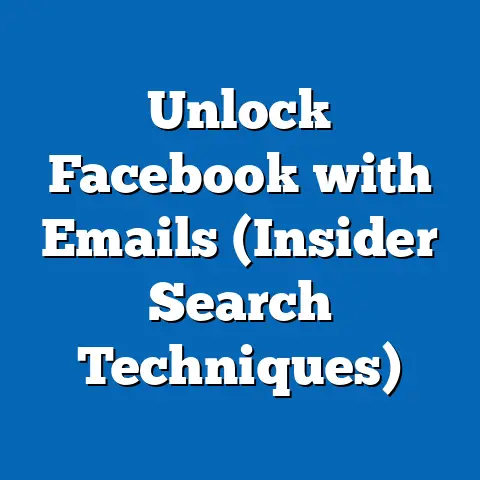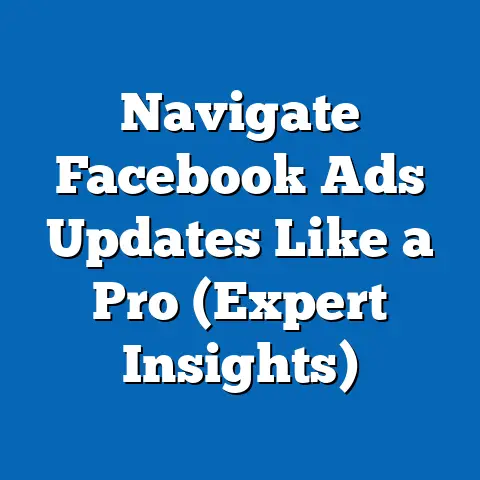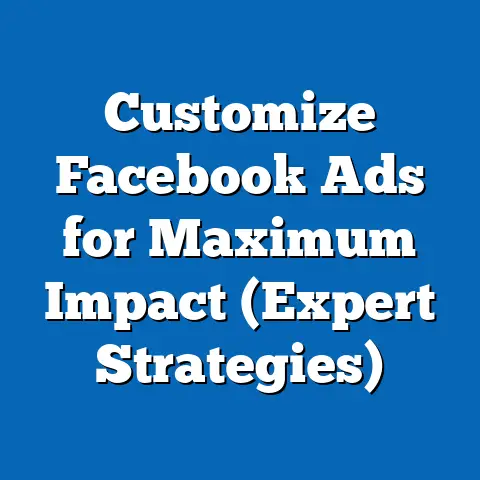Slash Facebook Ads Costs for Dentists (Proven Strategies)
A common misconception among dental practices is that Facebook advertising is prohibitively expensive, offering little return on investment (ROI) for small to medium-sized businesses in the healthcare sector. Many dentists believe that digital advertising, particularly on social media platforms, is a luxury reserved for larger corporations with hefty marketing budgets. However, this assumption overlooks the platform’s highly targeted capabilities and cost-effective strategies that can significantly reduce expenses while driving patient acquisition.
The implications of mastering cost-effective Facebook advertising extend beyond individual practices. As more dentists adopt these strategies, the dental industry as a whole can enhance patient outreach, improve access to care, and foster community trust. Let’s explore how to transform this perceived financial burden into a strategic asset.
Historical Context: The Evolution of Digital Advertising and Dentistry
The rise of digital advertising in the early 2000s marked a pivotal shift in how businesses, including dental practices, connect with consumers. Initially, online ads were dominated by banner displays and search engine marketing through platforms like Google AdWords. However, the launch of Facebook Ads in 2007 introduced a new era of social media marketing, emphasizing user data and hyper-targeted campaigns.
For dentists, the transition to digital marketing was gradual. Historically, dental practices relied on word-of-mouth referrals, local newspaper ads, and direct mail campaigns to attract patients. The advent of social media platforms like Facebook disrupted this model, offering an unprecedented ability to reach specific demographics based on location, age, interests, and behaviors.
Significant events, such as the 2008 financial crisis, also shaped the marketing landscape for dentists. Budget constraints forced many small practices to seek affordable advertising alternatives, accelerating the adoption of social media as a low-cost, high-impact solution. Today, with nearly 70% of adults in the U.S. using Facebook (Pew Research Center, 2023), the platform has become a critical tool for engaging local communities and building patient relationships.
Defining Characteristics of the Dental Market in Digital Advertising
The dental industry presents unique challenges and opportunities when it comes to Facebook advertising. Unlike retail or e-commerce businesses, dental services are highly localized, with most patients seeking providers within a 5- to 10-mile radius of their home or workplace. This geographic constraint makes Facebook’s location-based targeting a game-changer, allowing dentists to focus ad spend on nearby audiences.
Additionally, dental services often involve high consumer trust and decision-making based on credibility. Patients are more likely to choose a dentist based on reviews, recommendations, or perceived expertise rather than impulsive purchases. This necessitates ad content that emphasizes social proof, such as testimonials and before-and-after photos, over traditional sales pitches.
Finally, the dental market is characterized by a wide range of service offerings, from routine cleanings to cosmetic procedures like teeth whitening or orthodontics. Each service appeals to different demographics, requiring tailored ad campaigns to maximize relevance and minimize wasted spend. Understanding these defining characteristics is crucial for crafting cost-effective strategies on Facebook.
Societal Implications: Digital Engagement and Patient Behavior
For dentists, this shift presents both opportunities and challenges. On one hand, Facebook allows practices to build brand awareness and trust through organic content and paid ads. On the other hand, the competitive nature of digital spaces means that poorly optimized campaigns can drain budgets without delivering results.
Why Facebook Ads Costs Can Be High for Dentists: Identifying the Pain Points
Before diving into cost-cutting strategies, it’s essential to understand why Facebook ad costs can spiral for dental practices. One primary factor is the high competition for local audiences. Dentists often bid against other healthcare providers, fitness centers, and local businesses for the same demographic, driving up cost-per-click (CPC) rates.
Another issue is inefficient targeting. Without precise audience segmentation, ads may reach irrelevant users, resulting in low engagement and wasted spend. For instance, promoting cosmetic dentistry to an audience uninterested in elective procedures can inflate costs without generating leads.
Lastly, many dentists lack the time or expertise to optimize campaigns, leading to poorly designed ads or neglected performance tracking. According to a 2022 survey by Dental Economics, over 60% of dental practices reported struggling with digital marketing due to limited in-house skills. Addressing these pain points is the foundation of slashing ad costs.
Proven Strategies to Slash Facebook Ads Costs for Dentists
Below, we outline data-driven, actionable strategies to reduce Facebook ad expenses while maintaining or improving campaign performance. These approaches are rooted in industry best practices and tailored to the unique needs of dental practices.
1. Hyper-Local Targeting for Maximum Relevance
Facebook’s geotargeting tools allow dentists to focus on users within a specific radius of their practice, minimizing irrelevant impressions. Start by setting a tight geographic boundary—typically 5 to 10 miles—around your location. Exclude areas outside this radius to avoid wasting budget on users unlikely to visit.
Additionally, layer demographic filters such as age and gender to align with your ideal patient profile. For example, target adults aged 25-55 for general dentistry or parents for pediatric services. This precision reduces CPC by ensuring ads reach only the most relevant audiences.
2. Leverage Lookalike Audiences for Cost-Efficient Scaling
Lookalike audiences are a powerful, underutilized tool for dentists. By uploading a list of existing patients (ensuring compliance with HIPAA and data privacy laws), you can create a custom audience. Facebook then identifies users with similar characteristics, expanding your reach without the high costs of broad targeting.
Studies show that lookalike audiences can reduce acquisition costs by up to 30% compared to generic demographic targeting (WordStream, 2023). Test different lookalike audience sizes—starting with a 1% match rate for the highest similarity—and monitor performance to find the sweet spot.
3. Optimize Ad Creative for Engagement Over Clicks
High-quality ad creative can lower costs by improving click-through rates (CTR) and quality scores, which influence Facebook’s ad auction system. Focus on visuals that resonate with dental patients, such as smiling faces, clean office environments, or before-and-after treatment photos (with patient consent). Avoid generic stock images that fail to build trust.
Craft compelling copy that addresses pain points, such as “Struggling with tooth pain? Book a free consultation today!” Use clear calls-to-action (CTAs) like “Schedule Now” to drive immediate responses. A/B test multiple ad variations to identify which combinations yield the lowest cost-per-lead (CPL).
4. Utilize Retargeting to Re-Engage Interested Users
Retargeting campaigns target users who have already interacted with your practice—whether by visiting your website, engaging with a post, or watching a video ad. These warm leads are more likely to convert, often at a lower cost than cold audiences. Install the Facebook Pixel on your website to track visitor behavior and create retargeting audiences.
For example, retarget users who viewed your “Services” page but didn’t book an appointment with a special offer, like a discounted cleaning. Retargeting can reduce CPL by up to 40%, as these users already have some level of intent (HubSpot, 2022).
5. Focus on Cost-Effective Objectives and Placements
Facebook offers various campaign objectives, such as brand awareness, traffic, and lead generation. For dentists aiming to reduce costs, prioritize lead generation or conversion objectives over broad awareness campaigns. These objectives optimize for actions like form submissions or bookings, delivering better ROI.
Additionally, experiment with ad placements. Automatic placements often spread your budget across less effective formats, like sidebar ads. Instead, manually select high-performing placements like the News Feed or Stories, which tend to drive stronger engagement for service-based ads.
6. Schedule Ads for Peak Engagement Times
Timing plays a critical role in ad performance. Use Facebook’s Audience Insights to identify when your target patients are most active online. For instance, parents may engage more in the evenings, while working adults might browse during lunch hours.
Schedule ads to run during these peak times and pause them during low-engagement periods. This approach prevents budget waste on hours with minimal interaction, stretching your ad spend further.
7. Monitor and Adjust Campaigns with Data-Driven Decisions
Continuous monitoring is key to cost reduction. Use Facebook Ads Manager to track metrics like CPC, CPL, and conversion rates daily. If an ad set underperforms—say, with a CPC above $2.00—pause it and allocate budget to higher-performing sets.
Set a realistic daily budget cap to avoid overspending, and use rules to automate adjustments (e.g., pause ads if cost-per-result exceeds a threshold). According to a 2023 report by Social Media Examiner, advertisers who actively optimize campaigns save an average of 25% on ad spend compared to those who “set and forget.”
8. Offer Value-Driven Promotions to Boost Conversions
Promotions can lower acquisition costs by incentivizing action. Offer limited-time deals, such as a free consultation or a discount on first-time cleanings, to attract price-sensitive patients. Highlight these offers in your ads with urgency-driven language like “Offer Ends Soon!”
Ensure the landing page aligns with the ad’s promise, providing a seamless user experience. A high conversion rate from promotions directly reduces CPL, making your budget more efficient.
Comparing Costs Across Industries: Where Dentists Stand
To contextualize the cost of Facebook ads for dentists, it’s useful to compare benchmarks across industries. According to WordStream’s 2023 data, the average CPC for healthcare ads is $1.32, slightly below the overall average of $1.42. However, costs can spike in competitive local markets, where dentists may see CPCs as high as $2.50.
Compared to e-commerce or retail, where CPCs often hover around $0.70 due to broader audience pools, dental ads face higher costs due to localized competition and niche targeting. However, the lifetime value of a dental patient—often hundreds or thousands of dollars over years of care—makes even a higher upfront cost justifiable with the right strategy.
Technological and Economic Factors Influencing Ad Costs
Technological advancements in Facebook’s algorithm have made advertising more accessible but also more complex. Features like machine learning-driven ad delivery optimize for results, but they require advertisers to provide clear data inputs (e.g., pixel tracking) to work effectively. Dentists who fail to leverage these tools may see higher costs due to suboptimal delivery.
Economically, rising inflation and consumer spending shifts impact ad performance. As patients tighten budgets, they may delay non-emergency dental care, requiring ads to focus on urgency and value. Additionally, Facebook’s ad auction system means costs fluctuate with demand—holidays or back-to-school seasons often see spikes in CPC as more businesses advertise.
Social and Cultural Nuances in Dental Advertising
Socially, trust remains a cornerstone of dental marketing. Cultural attitudes toward healthcare vary, with some communities prioritizing affordability and others valuing expertise or convenience. Tailor ad messaging to reflect these priorities—highlighting payment plans in cost-conscious areas or advanced technology in affluent ones.
Diversity within target audiences also matters. A one-size-fits-all ad may alienate segments of your community. For instance, younger patients may respond to trendy visuals on Instagram (a Facebook-owned platform), while older adults might prefer straightforward messaging on the main Facebook feed.
Implications for Dental Practices and Society
Mastering cost-effective Facebook advertising offers significant benefits for dental practices. Reduced ad spend allows smaller practices to compete with larger chains, leveling the playing field and fostering innovation in patient engagement. It also enables practices to allocate resources to other areas, such as staff training or equipment upgrades, ultimately improving care quality.
On a societal level, affordable advertising can bridge gaps in dental care access. By reaching underserved populations with targeted campaigns, dentists can educate communities about oral health and encourage preventive care. However, there’s a risk of over-commercialization, where aggressive marketing prioritizes profit over patient needs—a balance that must be carefully managed.
In the workplace, adopting digital strategies may require upskilling staff or hiring marketing specialists. This shift reflects a broader trend of healthcare providers integrating technology into operations, creating new roles and opportunities within the industry.
Forward-Looking Insights: The Future of Dental Advertising on Facebook
Looking ahead, the landscape of Facebook advertising for dentists will likely evolve with technological and societal changes. Emerging tools like augmented reality (AR) ads could allow patients to “visualize” cosmetic results, enhancing engagement at a potentially higher cost. Privacy regulations, such as updates to Apple’s iOS tracking policies, may also limit data availability, requiring dentists to focus on first-party data collection (e.g., email lists).
The growing emphasis on video content—evident in the rise of Reels and Stories—suggests that dynamic, short-form ads will dominate. Dentists who adapt early to these trends can gain a cost advantage before competition intensifies. However, uncertainties remain, including potential platform fee increases or shifts in user demographics as younger generations migrate to platforms like TikTok.
Conclusion: Transforming Challenges into Opportunities
Slashing Facebook ad costs for dentists is not only achievable but also essential in today’s digital-first world. By debunking the myth of prohibitive expenses and implementing proven strategies—such as hyper-local targeting, retargeting, and data-driven optimization—dental practices can achieve substantial savings while growing their patient base. The historical shift to social media marketing, coupled with the unique characteristics of the dental market, underscores the importance of tailored approaches over generic tactics.
The societal implications of accessible, cost-effective advertising are profound, promising improved patient outreach and care access. Yet, challenges like rising competition and evolving technology require ongoing adaptation. As we look to the future, dentists who embrace innovation and prioritize strategic ad spend will not only survive but thrive in an increasingly competitive landscape.
By understanding and acting on these insights, dental practices can turn the perceived burden of Facebook advertising into a powerful tool for growth and community impact. The path forward is clear—now is the time to act.

